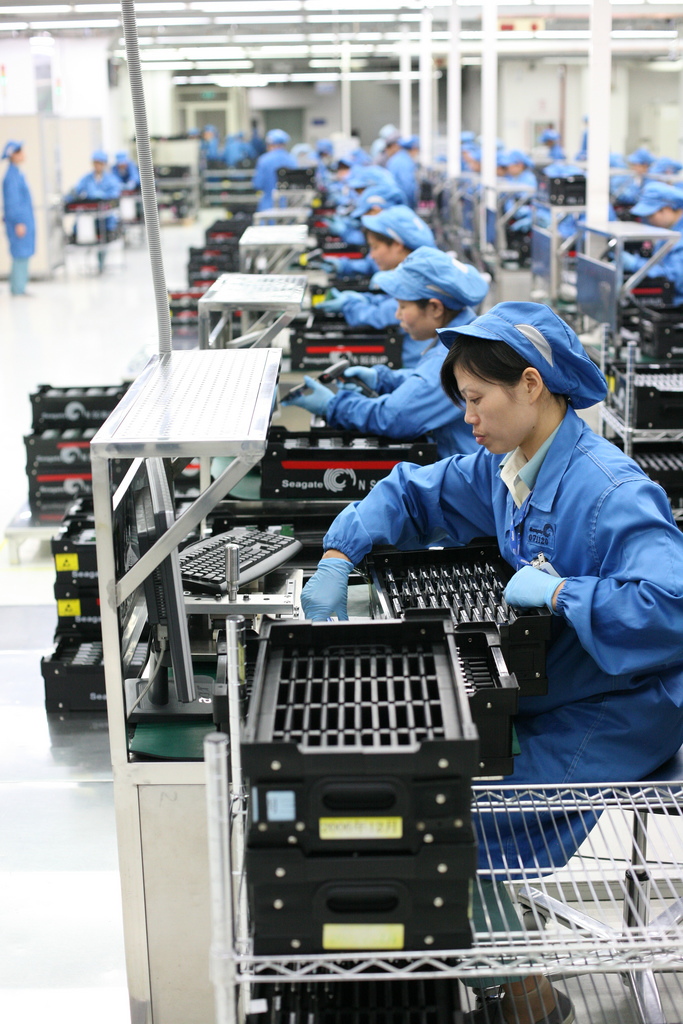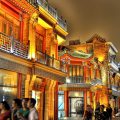Prior to Christmas Day, the Catalogue for the Guidance of Foreign Investment Industries (Revised 2011) was approved by the State Council and promulgated jointly by the National Development and Reform Commission (NDRC) and the Ministry of Commerce. The changes in the new Catalogue are driven by China’s economic status and international economic environment and reflect China’s overall economic orientation of long-term sustained development in the future.
Upgrade Traditional Manufacturing
As for traditional manufacturing such as textile, chemicals and machinery, China has unmatched powerful capacity but most of the products contain low technology and low added-value. Although national enterprises achieved remarkable progress and breakthroughs in independent R&D, most cutting-edge technology and pricing power still clutched by Western counterparts. Meanwhile, with the rapid increase of labour cost, “population dividends” will be petered out gradually. Traditional manufacturing is falling into a swamp, with some textile and apparel manufacturers have moved to countries and regions with lower labour cost such as Vietnam and Cambodia.
It’s naive to think the rising labour cost is a simple pay raise. It actually reflects the increased educational and technical of Chinese workforce and the improvement in social welfare and security systems. Therefore, China’s traditional industrial system has to upgrade accordingly. The new Catalogue sends a positive message that foreign investors are encouraged to invest in high-end sophisticated manufacturing and apply advanced technologies and equipments, new techniques, new materials to upgrade China’s traditional manufacturing.
Grasp Opportunities to Adjust Industrial Structure
Over the past decades, investment has been a major contributor for China’s impressive economic growth. However, driven by this powerful machine, a swaths of industries fall into overcapacity and redundancy with disturbingly high energy consumption per GDP and severe pollution to natural resources and environment. Against the devastating global financial crisis between 2008 and 2009, Chinese economy came back to the fast track after temporary fluctuation safeguarded by its unique economic environment and stimulated by the 4 trillion incentive plan. Confronted the double dip of world economy triggered by European debt crunch over the last year, domestic real estate foam and mounting inflation pressure forced China to take measures to slow down its economic growth, offering this high-speed train a chance to maintain after long-distance travel.
The new Catalogue encourages foreign investors to involve in recycling economy to curb overcapacity and redundancy in certain industries of China and eliminated the finished vehicle manufacturing, poly-silicon and coal chemical from the Encouraged category. These manifest that China is seeking for the re-balance of economic structure including the balance between economy and environment as well as between economy and people’s livelihood.
Cultivate Strategic Emerging Industries and Promote Service Industry
China’s GDP has encouragingly surpassed Japan and Germany. But scoring success solely relying on quantity is not a long-term solution. As catching up with Western traditional industries, China must explore ways to become a bellwether, paving the way for the future. In response, in the new Catalogue, key parts, components and equipments in strategic emerging industries including new energy-powered vehicle and new generation Internet, service sectors such as charging stations for electric cars, start-ups, IPR service, onshore oil pollution cleaning-up technology and skills training are encouraged, and the share proportion limit is removed. Strikingly, medical institutions and financial leasing companies are opened for foreign investment for the first time, guiding foreign investors to grab vantage market position in emerging industries by teaming up with Chinese businesses.
Most corporations as entering in Chinese market possess cutting-edge technology and ample marketing experience and are “forced” to invest in China or cooperate with Chinese enterprises partly because of industrial chain shift or lower production costs. However, China is on a par with Western peers in terms of emerging industries. Besides, the massive market of 1.3 billion people is more than enough to support scaled development of any new industry. This a trump card for China.
Balance Regional Development
There’s obvious terraced economic gaps among eastern, central and western parts of China due to either geological and historical factors or marco policies. According to the 12th Five-Year Plan, China will continue to push forward differentiated industrial policies, launching a new round of Western Development and vigorously spurring the rising of Central Area. As a result, some “Encouraged” items are removed from the new Catalogue. Industrial transfer and advantageous industries development of central and western regions will be considered in the Advantageous Industrial Catalogue for Foreign Investment in Central and Western Region of China. The lagged behind central and western regions badly need huge investment to develop their infrastructures.
Moreover, the soaring living cost in eastern metropolitan has forced more and more pheasant-workers to look for jobs in their hometown (second-tier, third-tier, even fourth-tier cities). Although salary will be lower than that in first-tier cities, the familiar environment and lower living cost are more attractive to them. More importantly, they can get together with their parents and children every weekend. This natural return unintentionally eased some social contradictions, particularly the “Left-Behind Children” phenomenon resulted from “Migrant Labour Wave”.
The “4 trillion incentive plan” is a one-time thing. Chinese government has realized that the transformation from extensive model to intensive model to generate domestic demand combined with foreign fund and technology is the right prescription for sustained economic development. Therefore, at the Central Economic Work Conference held in Nov. 2011, Chinese policy makers alleged that one of the top priorities of economic mission in 2012 is to “accelerate economic restructuring and promote coordinated economic development” offering another productive chance for foreign investors.
Few had foreseen the splendid success achieved by Volkswagen in China when the first “Santana” was assembled in a joint venture factory in Shanghai 30 years ago. Of course, Volkswagen is not alone. With China’s revolutionary changes, a large number of transnational corporations have scored remarkable achievements in China. Huge potential market, industrial chain, production capacity and lower costs in China has prompted many transnational corporations to shift their strategic focus in China.
2012 is the Year of Dragon. Dragon symbolizes good luck and power in Chinese culture. Like this sacred animal created by Chinese ancestors through integrating tiger’s whiskers, body of serpent, deer’s antler and hawk’s claws, Chinese and Western businesses also should combine their advantages to create a “World Dragon” pursuing common prosperity.
Share




















Lascia un commento